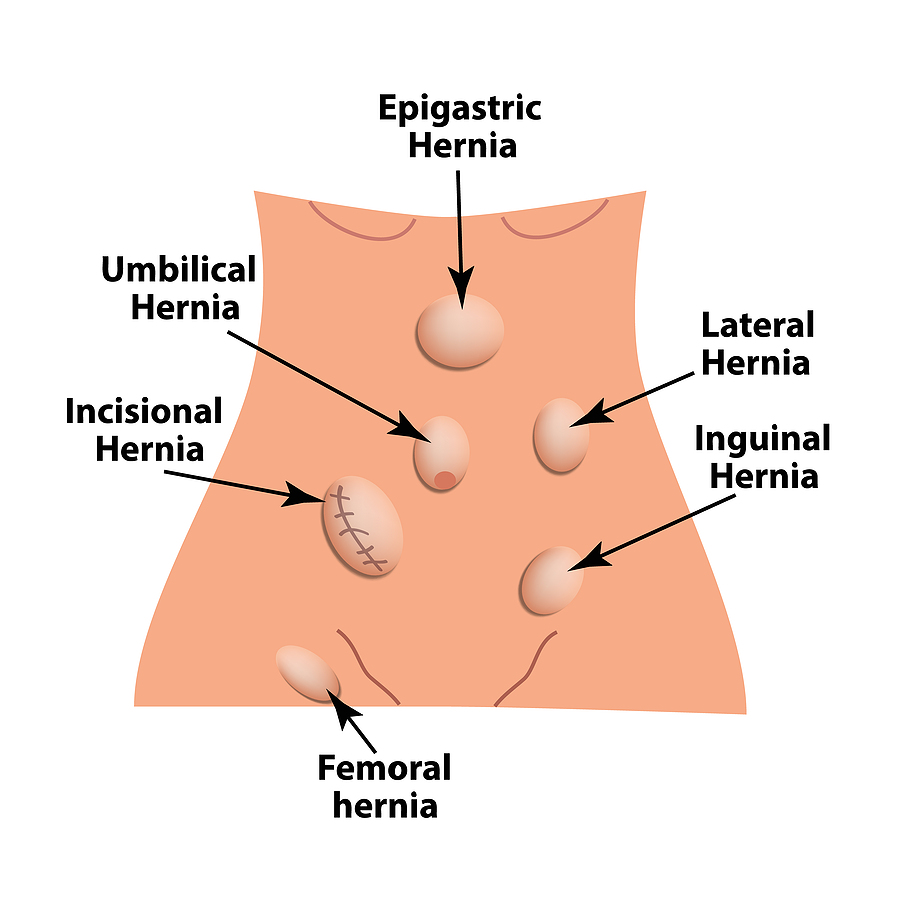Hernia Surgery: Inguinal, Umbilical, Incisional
 What are Hernias?
What are Hernias?
Hernias are a common medical condition where an organ or tissue protrudes through a weak spot in the muscle or connective tissue. When left untreated, hernias can cause significant discomfort and lead to serious complications. Hernia surgery offers effective solutions to repair these defects and restore normal function. This article delves into the different types of hernia surgeries, focusing on umbilical hernia surgery and incisional hernia surgery.
Understanding Hernias
Hernias can occur in various parts of the body but are most commonly found in the abdominal area. They can be caused by factors such as heavy lifting, chronic coughing, obesity, pregnancy, and previous surgical incisions.
Types of Hernias
- Inguinal Hernia: A bulge that occurs near the groin region.
- Umbilical Hernia: Occurs near the belly button.
- Incisional Hernia: Develops at the site of a previous surgical incision.
Inguinal Hernia Surgery
Understanding Inguinal Hernias
An inguinal hernia occurs when tissue, such as part of the intestine, protrudes through a weak spot in the abdominal muscles. This type of hernia is most common in men and can cause pain and discomfort, especially during physical activities.
Symptoms of Inguinal Hernia
- A bulge in the groin area
- Pain or discomfort, particularly when bending over, coughing, or lifting
- A heavy or dragging sensation in the groin
- Weakness or pressure in the groin
Surgical Treatment Options
- Open Inguinal Hernia Repair: The surgeon makes an incision in the groin and pushes the protruding tissue back into the abdomen. The weakened area is then reinforced with synthetic mesh to prevent recurrence.
- Laparoscopic Inguinal Hernia Repair: This minimally invasive technique involves several small incisions. A laparoscope (a thin tube with a camera) guides the surgeon, who repairs the hernia using synthetic mesh. This method typically offers quicker recovery and less postoperative pain.
Recovery and Aftercare
- Most patients return to normal activities within a few weeks.
- Follow your surgeon’s advice on lifting restrictions and activity levels.
- Watch for signs of complications, such as fever, increased pain, or swelling.
Umbilical Hernia Surgery
What is an Umbilical Hernia?
An umbilical hernia occurs when part of the intestine or fatty tissue pushes through the abdominal wall near the navel (belly button). It is common in infants but can also affect adults.
Symptoms
- Visible bulge near the belly button
- Pain or discomfort, especially when coughing, bending, or lifting
- Swelling or tenderness around the navel
Surgical Procedure
Umbilical hernia surgery is typically recommended when the hernia is painful or enlarging. The procedure can be performed using open surgery or laparoscopic surgery.
- Open Surgery: A small incision is made at the base of the navel. The protruding tissue is pushed back into the abdomen, and the abdominal wall is reinforced with sutures or mesh.
- Laparoscopic Surgery: Several small incisions are made, and a laparoscope (a thin, flexible tube with a camera) is used to guide the repair. Mesh is often used to strengthen the abdominal wall.
Recovery
Recovery from umbilical hernia surgery is generally quick, with most patients returning to normal activities within a week. Full recovery may take a few weeks, depending on the individual and the type of surgery performed.
Incisional Hernia Surgery
What is an Incisional Hernia?
An incisional hernia occurs at the site of a previous surgical incision. It can develop if the incision site does not heal properly or is subjected to excessive strain.
Symptoms
- Bulging at the site of the previous surgical scar
- Pain or discomfort, especially during physical activity
- Swelling or a feeling of heaviness in the affected area
Surgical Procedure
Incisional hernia surgery aims to close the hernia defect and strengthen the weakened area of the abdominal wall.
- Open Surgery: An incision is made over the previous scar. The herniated tissue is repositioned, and the defect is closed with sutures or mesh reinforcement.
- Laparoscopic Surgery: Multiple small incisions are made, and a laparoscope guides the repair. Mesh is commonly used to provide additional support.
Risks and Benefits of Hernia Surgery
Benefits
- Relief from Symptoms: Hernia surgery effectively relieves pain and discomfort.
- Prevention of Complications: Surgical repair prevents complications such as strangulation and obstruction.
- Improved Quality of Life: Patients can resume normal activities without the limitations imposed by a hernia.
Risks
- Infection: As with any surgery, there is a risk of infection.
- Recurrence: Hernias can recur, especially if the repair site is subjected to excessive strain.
- Complications from the Anaesthetic: Rare but possible complications from the anaesthetic.
Preparing for Hernia Surgery
Before the Procedure
- Medical Evaluation: A thorough medical evaluation to assess the patient’s overall health.
- Preoperative Instructions: Follow any dietary and medication instructions provided by your surgeon.
During the Procedure
- Anaesthetic: General or local anaesthetic is administered to ensure patient comfort.
- Surgical Technique: The chosen surgical technique is performed to repair the hernia.
After the Procedure
- Recovery: Patients are monitored in a recovery area before being discharged.
- Follow-Up Care: Adherence to follow-up appointments and post-operative care instructions is crucial for optimal healing.
Conclusion
Hernia surgery, including umbilical, incisional, and complex abdominal hernia repairs, is a critical intervention to alleviate symptoms and prevent complications. Understanding the types of hernia surgeries and the associated recovery processes helps patients prepare effectively and ensures the best possible outcomes. If you suspect you have a hernia, consult with a healthcare provider to discuss the appropriate surgical options for your condition.
For more information or to schedule a consultation with our experienced surgical team, contact us today. Prioritise your health and take the first step towards a hernia-free life.


